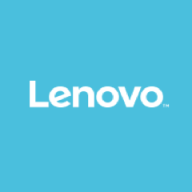

Sangfor HCI and Lenovo ThinkAgile HX Series compete in the hyper-converged infrastructure market. Sangfor HCI has the upper hand in pricing and customer support, while Lenovo offers robust features that may justify its premium cost.
Features: Sangfor HCI includes integrated security, a user-friendly management system, and focuses on simplicity and efficiency. Lenovo ThinkAgile HX Series is known for scalability, comprehensive ecosystem support, and advanced feature set.
Ease of Deployment and Customer Service: Sangfor HCI is recognized for straightforward deployment and responsive customer service. Lenovo ThinkAgile HX Series requires a more technical setup but provides extensive support resources.
Pricing and ROI: Sangfor HCI has a competitive setup cost and offers quick ROI, appealing to smaller enterprises. Lenovo ThinkAgile HX, while more expensive initially, delivers high ROI through long-term performance, making it valuable for larger organizations.


Designed for easy deployment and manageability in scale-out clusters, the Lenovo ThinkAgile HX Series combines Nutanix software with Lenovo’s highly reliable and scalable servers. These appliances ship fully integrated, tested, and configured so that you can dramatically accelerate your time to value and reduce your infrastructure maintenance.
Sangfor HCI is an IT infrastructure platform built on converged architecture. It integrates server virtualization, distributed storage, and networking. Sangfor HCI provides a unified management platform that converges compute, storage, networking, and security on a single software stack. This approach delivers a simplified architecture, ease of use, and reliability for business-critical applications.
Hyperconverged infrastructure is a unified system of data storage. HCI combines storage, computing, networking, and management, unlike traditional storage solutions. HCI systems enable you to build your private cloud, expand to a public cloud, or have your own true hybrid cloud. Sangfor HCI presents two product models: The Sangfor HCI server appliance is a hardware version that enables easy deployment. Sangfor HCI software is the digital version combined with a third-party server that enables flexible deployment.
Sangfor HCI supports Windows systems on desktop and is web-based. Its range of use cases cover a wide spectrum of industries, from healthcare to manufacturing. It is applicable for mid- and large-sized businesses. The software is customizable. Users can customize the logo and contact information in the user interface.
Benefits and Features
Use Cases
Sangfor HCI can be applied tin various scenarios:
Reviews from Real Users
Gabriele P., Senior Software and Systems Engineer at SAMU.IT, says "It is flexible like a hyper-convergence system. You can add nodes, and you can scale to have better performance and stability. I also like the backup feature, the recovery system, and the web interface GUI to handle everything."
A Junior Solutions Engineer at a tech services company adds that "Sangfor has many solutions, and you can easily manage their machine servers with just one management. They're always striving for greatness, and they continuously update their products. For example, they have now built endpoint security within the firewall. They are continuously improving not only the security but also all other products."
We monitor all HCI reviews to prevent fraudulent reviews and keep review quality high. We do not post reviews by company employees or direct competitors. We validate each review for authenticity via cross-reference with LinkedIn, and personal follow-up with the reviewer when necessary.